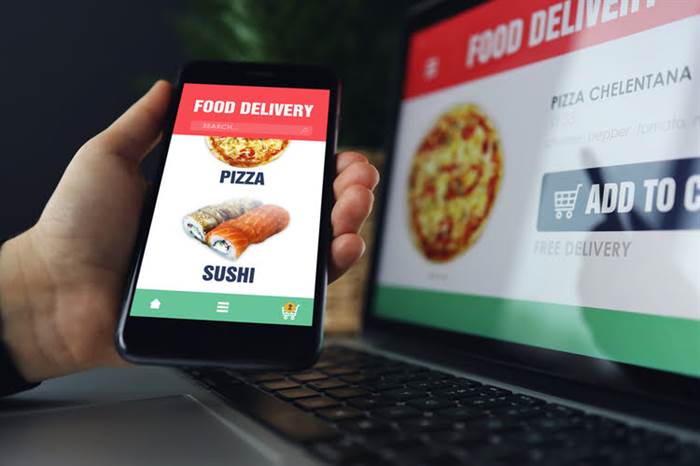In this article, you will learn the ins and outs of retail logistics and tips on how to improve your logistics management process. Creating better, proactive customer experience is the next phase of customer data management as brands connect CDPs to back-office ERP systems. Rahul Kumar worked as a content marketing analyst at WareIQ contributing to blog posts related to eCommerce operations, fulfillment and shipping along with a few topics around tips and tricks for eCommerce sellers. He has more than 3 years of content writing experience across industries like logistics & supply chain, media etc.
Mr. Dubrowski said that there were no lifetime bans and that the bank made decisions on a case-by-case basis. What follow are profiles of customers who lost their accounts and an analysis of what behavior may have spurred their banks to shun them. Federal data on the types of SARs that banks file show what they worry about most. Last year, banks filing SARs tagged categories like suspicious checks, concern over the source of the funds and “transaction with no apparent economic, business or lawful purpose” most often, according to Thomson Reuters.
What does logistics mean in business?
An important part of logistics is the steps taken in order to maximize customer satisfaction. This includes elements such as demand planning, order fulfillment, inventory management and customer service operations. These elements ensure that the goods consumers need are stocked and orders are fulfilled in a timely manner. Logistics refers to the strategic movement of goods and services from one place to another. The retail supply chain is the flow of processes involved in the production and distribution of your products. There are various discrete components of a supply chain, such as warehousing, inventory management, procurement, order management, carrier partnerships, and more.
In business, logistics is the process of transporting and storing raw materials, finished goods, inventory, and other resources. Logistics in a business is typically made up of many components, including customer service, demand forecasting, warehousing, material handling, inventory control, order processing, and transportation. For example, in the natural gas industry, logistics involves managing the pipelines, trucks, storage facilities, and distribution centers that handle oil as it is transformed along the supply chain.
logistics
He added that “the vast majority of closures are correct, consistent with the regulatory obligations we are required to follow,” and that the number of closed accounts was a fraction of the bank’s overall business. As if the lack of explanation and recourse were not enough, once customers have moved on, they don’t know whether there is a black mark somewhere on their permanent records that will cause a repeat episode at another bank. If the bank has filed a SAR, it isn’t legally allowed to tell you, and the federal government prosecutes only a small fraction of the people whom the banks document in their SARs. In the process, banks are evicting what appear to be an increasing number of individuals, families and small-business owners. Often, they don’t have the faintest idea why their banks turned against them.

Inbound logistics usually refers to the logistical operations of companies that operate fairly upstream (B2B). Customs management, also known as global trade management, is often considered part of logistics. The paperwork to show compliance with government regulations usually is processed where goods cross national borders or enter shipping ports. Industrial machinery can typically identify products through either barcode or RFID technologies. Sometimes information in a bar code can be transmitted through radio frequency, more typically radio transmission is used in RFID tags. An RFID tag is a card containing a memory chip and an antenna that transmits signals to a reader.
Military logistics
For every business that sells directly to customers, retail logistics is essential to getting products from the manufacturer to the customer’s hands. While there are many options when it comes to packaging and delivering goods quickly, supply chain experts are still searching for ways to manufacture products at a speed that meet consumers’ growing expectations. For this reason, 3D printing has entered the logistics space as a possible solution. The process of gathering supplies and producing a product often requires the most time and effort within the supply chain setting. Today, the logistics realm is heavily influenced by AI and machine learning, which many logistics companies use to offer more accurate forecasting and enhanced order management. With these technological advances and more, the supply chain has been given the chance to prosper worldwide.
The goal of logistics is to meet customer requirements in a timely, cost-effective manner. Logistics automation is the application of computer software or automated machinery to improve the efficiency of logistics operations. Typically, this refers to operations within a warehouse or distribution center with broader tasks undertaken by supply chain engineering systems and enterprise resource planning systems. Global logistics is technically the process of managing the “flow” of goods through what is called a supply chain, from its place of production to other parts of the world. This often requires an intermodal transport system, transport via ocean, air, rail, and truck. The effectiveness of global logistics is measured in the Logistics Performance Index.
Manage inventory costs
Because distance significantly affects the prices of retail orders, the lesser the distance a package needs to travel, the lower the cost customers need to pay. This is similar to booking carpool services like Lyft and Uber, where farther destinations mean higher costs. With in-store pickup, we can design and sell a series of products that don’t need to ship to California, which helps us be more economical with our order fulfillment for bigger, higher-price-point items. Finding the right outsourced fulfillment partner is essential, but all are not created equal.
- If you have multiple warehouses within your logistics network, the shipment is sent out from the nearest location to the destination.
- DistributioncloselogisticsThe commercial activity of transporting resources from their current position to where they are needed.
- To optimize your supply chain to stay competitive and meet demand, it requires the ability to transform retail logistics into the digital world.
- Whereas a third-party logistics (3PL) service provider targets a single function, a 4PL targets management of the entire process.
- A business might turn to a 3PL provider to manage specific aspects of logistics, such as warehousing, while retaining some oversight of these operations.
- The United States Armed Forces’ categorical supply classification was developed in such a way that categories of supply with similar consumption variables are grouped together for planning purposes.
In some firms, all these activities are placed within a single logistics department; in others, they are shared among departments. The firm’s logistics department also is responsible for logistics management, control, and planning. The firm may contract with an outside party to perform specific logistics services; this practice is referred to as third-party logistics. Logistics is the process of planning, controlling, and executing the transportation of goods within a company’s supply chain. Regardless of the inherent challenges of retail logistics, there are tricks to optimizing your logistics services for better results. However, one proven way is to implement retail logistics through various omnichannels.
Logistics activities
“About a year and a half after building out our business, we figured it was time to optimize some of our processes, including returns. The ability to work with one of the co-founders of ShipBob to launch a new, custom returns process was awesome. This is the unloading and official “checking in” of incoming ecommerce inventory, followed by its proper documentation and storage. Business owners now face challenges like supply and demand disruptions, inventory delays, global lockdowns, changing trade policies, and evolving consumer shopping behaviors. The need to build flexibility into your supply chain is more important than ever.

One of the major concerns of most eCommerce businesses is customer satisfaction. Merchants are invested in delivering quality goods to their customers and offering timely services by reducing delivery delays – this aspect is the core of logistics management. While 3PL providers are capable of handling the entirety of a company’s supply chain operations, the different components of the logistics process can be carried out by individual players. For instance, freight companies solely handle the physical transportation of goods, while freight forwarders are dedicated to optimizing transport solutions and handling necessary documentation.
Warehousing:
The capacity to transform retail logistics into the digital world is necessary for supply chain optimization in order to maintain competitiveness and satisfy demand. Traditional supply chain management methods are improved by digital supply chain transformation using the most recent advancements in logistics including automation, data and analytics, robotics and AI learning. The objective is to build a quicker, more durable and sustainable supply chain. Outbound logistics refer to the tasks and activities involved with moving the product to the end user.
Similarly to production systems, logistic systems need to be properly configured and managed. This activity is carried on in conjunction with the firm’s marketing staff and is used to obtain a better idea of the logistic needs of the next planning period. These needs include both delivery to customers and receipt of raw materials or components for assembly.
To meet customer expectations, traditional logistics systems aren’t enough to maintain efficiency and reduce labor costs. Fortunately, returns can be looked as an opportunity to further enhance the customer experience. By training your customer service team to initiate returns quickly while also asking for feedback is a great way to improve products by listening to what your customers retail software development have to say. Throughout the entire ecommerce supply chain, it’s important to have systems in place to manage inventory in real-time. If you partner with a 3PL like ShipBob, the order processing and fulfillment process is automated. Once your online store is connected to ShipBob’s fulfillment software, orders are sent to the nearest fulfillment center to the shipping destination.
